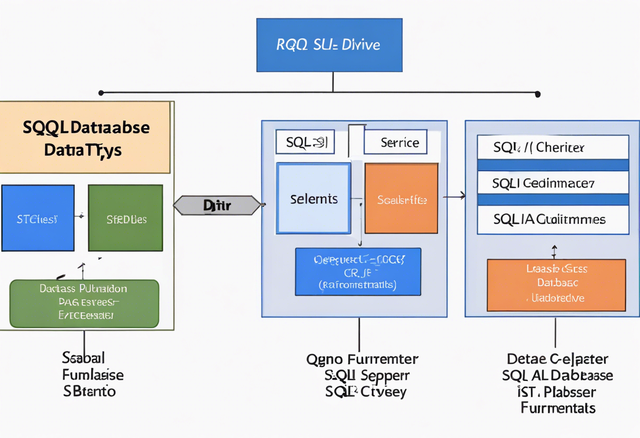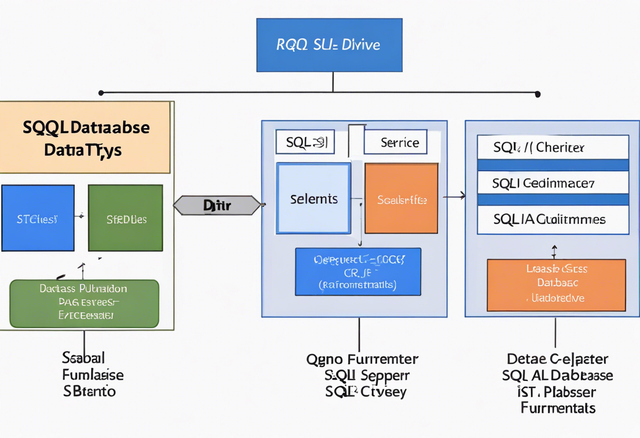SQL Data Types: A Deep Dive into Database Fundamentals
 Dishant Singh
Dishant Singh
SQL Data Types: A Deep Dive into Database Fundamentals
Nov 19, 2024 — 3 min read

SQL Data Types: A Deep Dive into Database Fundamentals
SQL Data Types: A Deep Dive into Database Fundamentals
In the realm of **SQL** (Structured Query Language), the foundation of efficient and reliable databases lies in understanding and utilizing the appropriate **data types**. These types define the kind of data a column can hold, **enforcing data integrity** and enabling optimized data storage and retrieval. This guide will delve into the various **SQL data types**, explaining each type's characteristics and practical applications.
Understanding Data Types
Think of data types as the building blocks of your database. Each column in a table is assigned a data type that determines what kind of information it can store. For example, you wouldn't store a person's age in a text field designed for storing addresses.
Choosing the right data type is crucial for several reasons:
- Data Integrity: It ensures that data entered into a database adheres to specific formats and constraints. This minimizes errors and maintains the consistency of your information.
- Optimized Storage: Different data types require varying amounts of storage space. Selecting the most suitable type can optimize database size and performance.
- Efficient Querying: Choosing the right data type allows **SQL queries** to process information efficiently. This translates to faster results and better system responsiveness.
Common SQL Data Types
Let's explore some of the most frequently used **SQL data types:**
Numeric Data Types
FLOAT (Floating-Point Number): Stores real numbers with a variable precision, often used for scientific calculations.
DECIMAL (Fixed-Point Number): Represents numbers with a fixed precision, ideal for financial applications.
INT (Integer): Stores whole numbers without decimals.
Character Data Types
TEXT (Large Text): Stores large amounts of text data, such as articles or blog posts.
CHAR (Fixed-Length String): Stores text strings of a fixed length. If the string is shorter than the defined length, it is padded with spaces.
VARCHAR (Variable-Length String): Stores text strings of varying lengths.
Date and Time Data Types
DATETIME: Combines date and time information.
TIME: Stores times of day.
DATE: Stores calendar dates.
Other Data Types
BLOB (Binary Large Object): Stores large binary data, such as images or audio files.
ENUM (Enumerated Type): Defines a set of allowed values.
BOOLEAN (Logical): Stores truth values (TRUE or FALSE).
Choosing the Right Data Type
Selecting the appropriate data type is paramount for **database efficiency and accuracy**. Consider these factors:
- Data Type Requirements: What kind of information are you storing? Is it text, numbers, dates, etc.?
- Data Range: What is the expected range of values? For example, is it a small integer or a large decimal?
- Data Integrity: Do you need to enforce specific formatting or constraints?
- Performance Optimization: How will this data type impact query performance and storage space?
Example Scenarios
Let's illustrate the practical application of data types with examples:
Scenario 1: Customer Management System
Imagine you're designing a database for managing customer information. You might have a table like this:
In this table:
- customer_id is an INT, suitable for storing unique customer identifiers.
- first_name and last_name are VARCHAR, allowing for variable-length text strings.
- email and phone are VARCHAR, accommodating varying email formats and phone numbers.
- date_of_birth is a DATE, storing calendar dates in a structured way.
- is_active is a BOOLEAN, representing a customer's active status as TRUE or FALSE.
Scenario 2: E-commerce Order Tracking
For an e-commerce platform tracking orders, you might use a table like this:
Here:
- order_id is an INT, uniquely identifying each order.
- customer_id is an INT, linking to the customer information table.
- order_date is a DATE, storing the date the order was placed.
- total_amount is a DECIMAL, representing the order's total cost with two decimal places.
- shipping_address is a VARCHAR, accommodating various addresses.
- status is an ENUM, limiting the possible order statuses to 'pending', 'processing', 'shipped', or 'delivered'.
Conclusion
Choosing the right **SQL data types** is a fundamental aspect of **database design and development**. By understanding the characteristics of each type and its practical use cases, you can create efficient, reliable, and scalable databases that meet your specific requirements. Remember to always analyze your data and database goals to select the most suitable types, ensuring data integrity and optimal performance.
Subscribe to my newsletter
Read articles from Dishant Singh directly inside your inbox. Subscribe to the newsletter, and don't miss out.
Written by
Dishant Singh
Dishant Singh
Hello,I am a full stack web developer known for transforming ideas into stunning, interactive digital experiences. With a rich portfolio of successful projects, I specialize in creating visually appealing and highly functional websites.